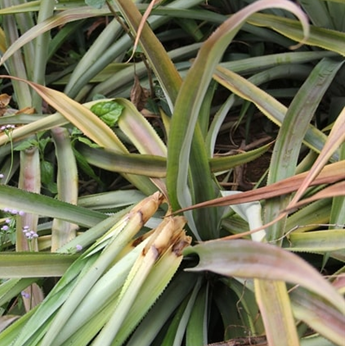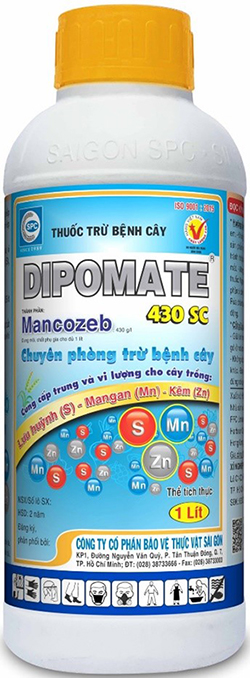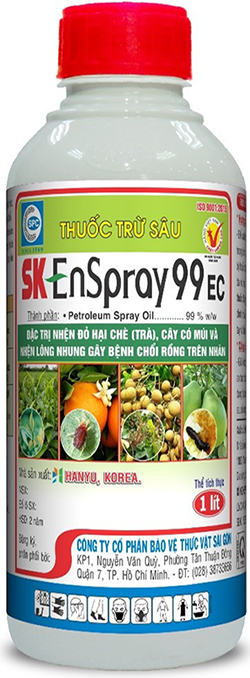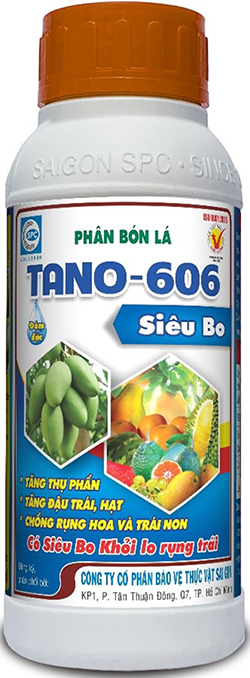|
BUD ROT DISEASE ON PINEAPPLE
21/06/2023
BUD ROT DISEASE ON PINEAPPLE Bud rot disease on pineapple is common and harmful in most pineapple growing areas, especially in pineapple growing areas in the northern provinces. All pineapple varieties are affected by this disease, but resistant varieties cause less damage. In general, this is one of the dangerous diseases on pineapple trees, causing top rot, fruit rot, and . plant death, causing loss of density and yield. **Symptoms: The disease usually arises in pineapple buds, because this is a humid place due to stagnant water and dirt from rain or fog... is an ideal condition for fungal growth. When the plant is diseased, the leaves will turn green, yellow, red, and the tips of the leaves will shrink. Looking at the top, we see that the pineapple bud is rotten black brown. Diseased leaves are easily removed from the top of the plant. The base of the diseased leaves has streaked black-brown edges and wet rot. Pineapple buds are rotten and milky white.
* Pathogens and conditions of development: - Pineapple bud rot disease caused by Phytophthora sp fungus - The disease develops strongly in the months with hot and humid weather, with a lot of rain or wind, or with a lot of fog and humidity. The disease also thrives in gardens with high density, poor drainage, excess nitrogen fertilization, but lack of potassium, calcium and microelements, gardens with many suckers such as aphids, gardens with many weeds, density ... *Preventive measures: - Clean up the remnants of previous crops and wild plants around the garden before planting - Use disease resistant varieties for planting. Treat seedlings before planting with ALPINE 80WG to eliminate disease sources. - Plant with appropriate density, do not plant too thick. - Manage water well, especially in the rainy season. After harvesting, clean the garden, prune diseased plants and destroy them to avoid spreading in the garden, apply lime to disinfect and improve soil pH. - Always keep the garden clean of weeds so that the garden is well ventilated. - Fertilize in a reasonable balance, avoid excess nitrogen, and add organic fertilizers. Increased use of SPC-K, SPC-CAL and TANO-601 to increase disease resistance. -It is recommended to use preparations with antagonistic Trichoderma fungi to apply with fertilizer. - The treatment of fruit stimulants continuously weakens the tree and reduces its resistance. Therefore, it is necessary to consider the health of the garden and have a suitable investment regime before handling. -When the disease appears in the field, use the following products: ALPINE 80WG, or TREPPACH BUL 607SL, or DIPOMATE 430SC. It is recommended to combine each of the above products with SK ENSPRAY 99EC mineral oil to increase the retention of products and prevent the penetration of fungi. It is possible to prevent right from the beginning of the rainy season to save money on prevention. -After the pineapple growing cycle ends, the land should be rotated with other crops such as rice, sugar cane, and legumes… to cut off the source of the disease.
|
To prevent, in addition to plowing and burying weed seeds, collecting weed stalks and stumps left after tilling the land to burn, not letting weeds produce seeds in production fields, etc., the use of chemical products is still a measure. optimal because of its ability to thoroughly kill weeds, reduce labor and take advantage of more time than manual weeding.
Miner has the scientific name Phyllocnistis citrella Staint., family Phyllocnistidae, order Lepidoptera. The miner occurs in many countries in the tropics and subtropics. The main host of the miner is the citrus family - Rutaceae. In addition, the miner also attacks mangosteen and some other plants.
Adult is a small planthopper, with a body 2-3 mm long, the whole body is ash gray, slightly greenish, the wings are opaque with many small brown spots.Eggs are oval, 0.3 mm long, have a pointed end and are attached directly to the leaf surface, leaf axils.
Green bugs specialize in the fruit of citrus groups (oranges, tangerines, lemons, grapefruits, kumquats...), some people call them orange bugs, or orange suckers. Their scientific name is Rhynchocoris poseidon or Rhynchocoris humeralis.
In Vietnam, yellow leaf curl disease is very common on papaya trees, especially the disease is often severe in areas of high and continuous planting, areas with hot and arid climates. The disease has significantly reduced the yield and quality of papaya. Gardens that are infected early when the plants are young may not yield. However, up to now, many gardeners still do not know the cause and how to fix it.
Spider mites are common pests on citrus trees, especially in hot and dry climates that are suitable for spiders to grow and cause severe damage.The group of harmful spiders is usually very small in size, unlike the natural enemy spiders.
This group includes species that are generally very small in size, causing damage by sucking plant sap (on leaves, fruits, branches, stems).
There are many species of mealybugs present on the group of Oranges,Tangerines,Grapefruits and Lemons (Citrus), which can be divided into 2 groups:
+ Group of sticky mealybugs with common varieties such as Lepidosaphes, Aonidiella, Coccus and Saissetia.
+ Group of flower mealybugs with common genera and species such as Pseudococcus, Planococcus and Icerya purchasi.
Dry branches and berries disease often appear to be common damage on coffee gardens during the rainy season. The disease causes death of branchs, dry fruit, severely affects the canopy structure and coffee yield if not paid attention to prevention.
Pink disease commonly causes diseases on rubber plantations in the rainy season, especially on garden from 4-8 years old. This year, rubber has to go through a period of severe drought, weakening the tree, so now in tnshe rainy season it is easy to get infected. Therefore, it is necessary to pay attention to good management to avoid affecting the garden.
In recent years, the area of citrus has been expanded because it is a fruit tree with high economic efficiency. However, in order to sell at a high price, not only in quality but consumers also require the external beauty of the fruit, so pest management on citrus is a matter of great concern to farmers. The hot season is a favorable condition for thrips to develop and cause damage, affecting the commercial value of fruit.
- Headquarters
- SAIGON PLANT PROTECTION JOINT STOCK COMPANY
- RQ 1, Nguyen Van Quy St., Tan Thuan Ward, HCM City
- Tax code: 0300632232
- Tel: (028) 38 733 295 - 38 732 077
- Fax: (028) 38 733 003 - 38 733 391
- Website: www.spchcmc.vn - Email: info@spchcmc.vn
- SAIGON PLANT PROTECTION COMPANY
- SAIGON PLANT PROTECTION JOINT STOCK ENTERPRISE
- Lot C1-C3 Hiep Phuoc Industrial Park, Hiep Phuoc Commune, HCM City
- Tel: (028) 3873 4089 - Fax: (028) 3873 4086
- Affiliated Unit
-
- Quick Links
- Home
- About us
- Career Opportunities















